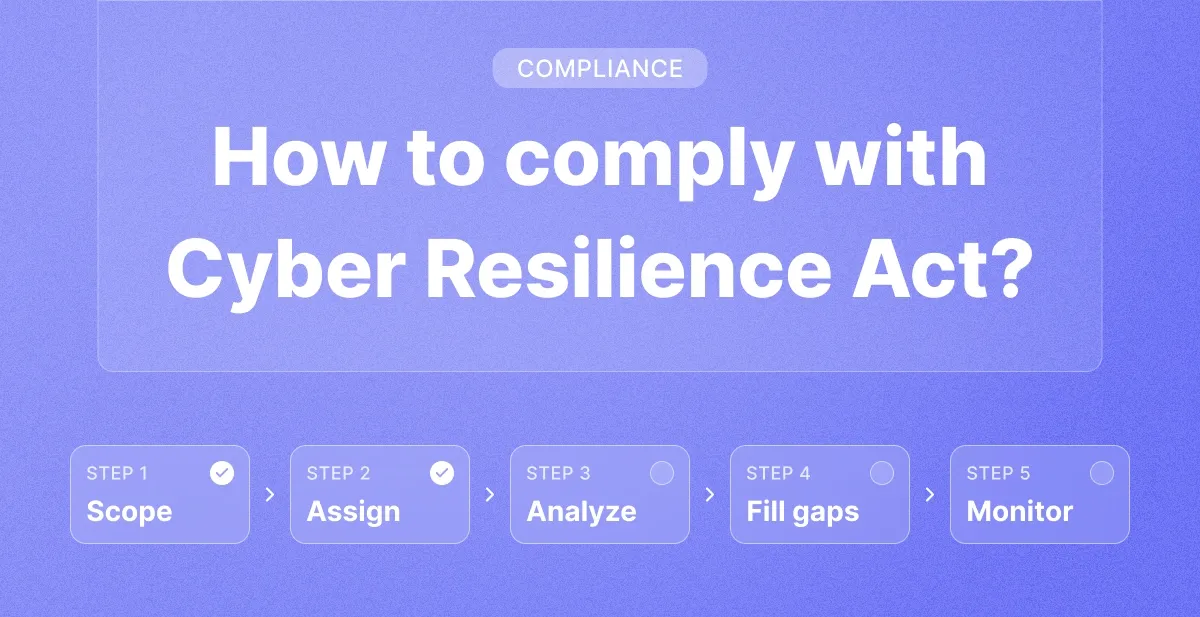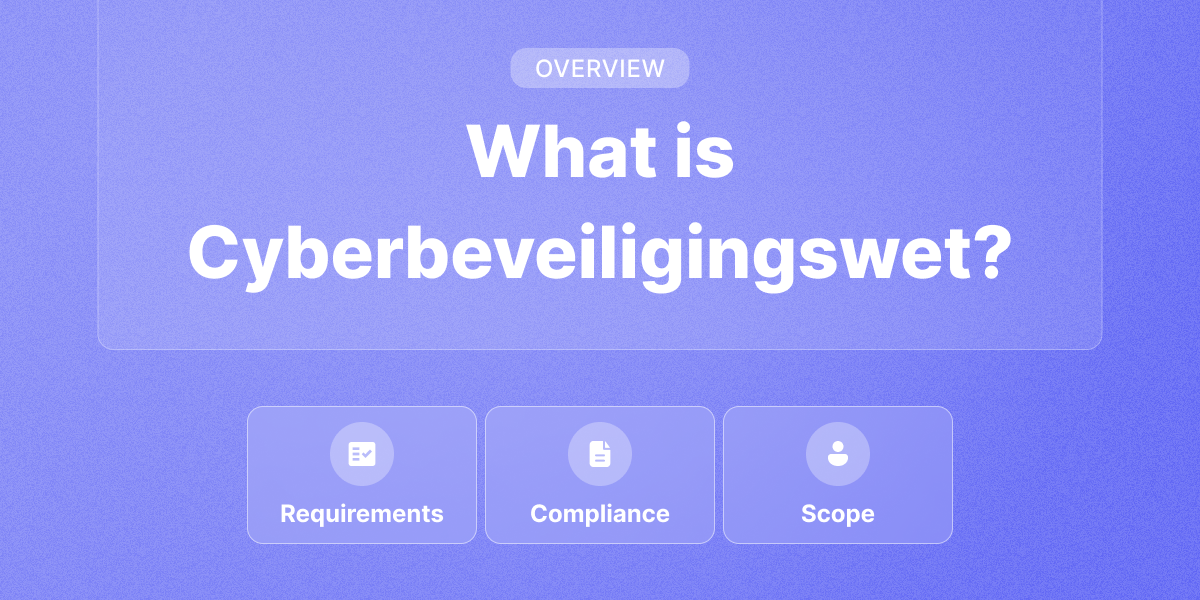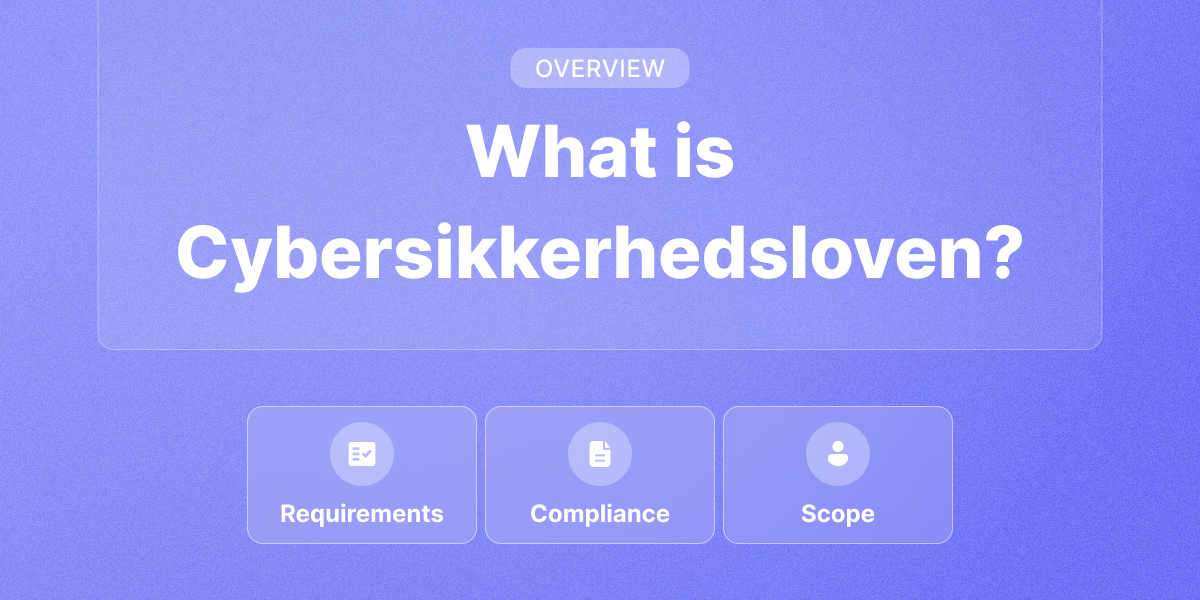
The Cyber Resilience Act (CRA) is an EU regulation aimed at ensuring that hardware and software products with digital elements (PDEs) are secure throughout their lifecycle. The CRA introduces mandatory cybersecurity requirements for manufacturers, importers, and distributors to reduce vulnerabilities and protect consumers and businesses across the EU.
CRA compliance is not optional. It's legally binding and affects a wide range of digital products marketed in the EU. Non-compliance can lead to market access restrictions and heavy fines.
From a security perspective, the CRA helps reduce attack surfaces in widely used products. From a commercial standpoint, meeting CRA requirements builds customer trust and positions you as a security-conscious provider.
Benefits of CRA compliance:
- Legal access to the EU market
- Fewer security incidents and vulnerabilities
- Competitive edge in sales due to built-in trust
- Improved internal security maturity
Read more about CRA: What is Cyber Resilience Act?
Step-by-step CRA compliance guide
Step 1: Understand scope
Start by confirming if your product falls under the CRA. It applies to most digital products sold in the EU, with some exceptions (e.g. open-source software not developed in the course of a commercial activity). Pay attention to sector-specific exemptions or overlaps with other laws like NIS2 or the Radio Equipment Directive.
If you're a software vendor or device manufacturer selling in the EU, assume CRA applies until proven otherwise.
Step 2: Assign responsibilities
Appoint roles internally for CRA compliance. Typical roles include:
- CRA compliance lead (project management)
- Technical lead (security controls)
- Legal/market affairs (declarations and notifications)
You’ll also need someone to handle vulnerability disclosure processes and communication with EU authorities.
Step 3: Analyze current security posture
Run a gap analysis based on the CRA requirements, covering:
- Security-by-design and default principles
- Vulnerability handling processes
- Technical documentation
- CE marking and conformity assessment procedures
Instead of spreadsheets, use a compliance platform or ISMS to cross-reference existing controls and avoid duplicate work.
Step 4: Fill gaps
Implement the required controls, processes, and documentation. CRA shares common ground with ISO 27001, NIS2, and other frameworks, so you can reuse:
- Secure development lifecycle procedures
- Vulnerability management policies
- Security update mechanisms
With Cyberday, you can map CRA requirements against your existing ISO 27001 or NIS2 implementation to save time.
Step 5: Ongoing monitoring and audits
Set up processes for:
- Continuous vulnerability handling and public reporting
- Monitoring product performance for security issues
- Incident response workflows
- Updating documentation and declarations when changes are made
Some parts of CRA (e.g. vulnerability handling) have strict timelines — updates or reports must be made within 24 hours to ENISA or authorities.
How Cyberday supports CRA compliance
Cyberday makes CRA compliance manageable by:
- Mapping CRA requirements into clear implementation tasks
- Showing how existing ISO 27001 / NIS2 work can be reused
- Offering CRA-specific documentation templates (e.g. CE documentation)
- Providing ready-made vulnerability handling workflows
- Automating recurring audits and reporting

How to implement CRA: Example scenario
Fictional org: SecureDevices Ltd.
Mid-size IoT device manufacturer with 50 employees. Sells smart locks in the EU, so is in the scope of CRA.
Timeline and actions:
- Month 1: Scoped CRA applicability. Used Cyberday to check overlapping NIS2/ISO 27001 work.
- Month 2–3: Ran gap analysis. Found missing areas in vulnerability handling and technical documentation.
- Month 4–5: Implemented secure development procedures, created CE documentation, updated incident response.
- Month 6: Internal CRA audit done. Assigned person responsible for EU authority communication. Declared conformity.
Total duration: ~6 months using existing ISO 27001 base and Cyberday support.
Biggest challenge: Creating vulnerability disclosure workflows that meet CRA’s short reporting timelines.
Want a faster way to get CRA-compliant? Start your free Cyberday trial, map your current controls, and follow ready-made tasks to close the gaps. No spreadsheets needed.

.svg)
























